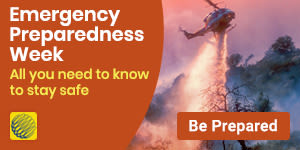Engineers still battling to reopen California Highway 1
Meteorologist, PhD
Wednesday, February 14, 2018, 7:33 PM - The California coast along the famed Big Sur area was reshaped in May 2017 when a huge landslide buried a quarter-mile section of the world-famous California Highway 1.
Million of tons of rock and mud covered this stretch of one of the most scenic routes in the world just a mile southeast of the small town of Gorda, CA, located about 60 miles south of the tourist hub of Monterey.

The May 24, 2017 landslide was undeniably one of the worst in California history. This section of Highway 1 had already been affected off and on since January by frequent minor landslides due to the heavy winter and spring precipitation, but despite the continuous maintenance work by Caltrans crews, the mountain finally won the battle. In a matter of minutes, the road was covered with 40-feet of solid material or the equivalent to 5 million cubic yards.

Image courtesy of USGS
Six months later, engineers and crews continue to work on stabilizing the terrain and reconstructing the road, a project that is expected to make a $40 million dent in the California road maintenance budget, and deter thousands of travelers away from the area.

Landslide structure (c/o USGS)
According to UCLA Engineering Geologist Hugh Robertson, this event is unique among other aspects because of its very large dimensions.
"Take a look at Google Maps and see the before and after of this event."
Because the event is relatively recent, the earth is still adjusting to find a state of equilibrium. The landslide basically occurred over an area where past major landslides had already occurred, "It's basically a slide within a slide," Robertson adds.

Graphic courtesy: National Weather Service
There is a certain degree of pressure to reopen this stretch of road as soon as possible, because it attracts close to 3,000 drivers every day traveling north or south mainly in search of the beautiful and peaceful scenery this part of the California coast offers.
Below: Before-and-after slider of the buried highway in May 2017
Highway 1, especially between the San Simeon and Monterey areas has always been prone to landslides. Back in 1983, another major landslide event near Julia Pfeiffer Burns State Park displaced close to 2 million cubic yards of material closing the road. For more than a year, 30 bulldozers and 7,700 pounds of explosives removed 3 million cubic yards of rock and soil.
"Slides", as Robertson calls them, usually come late in the season after the winter and spring rains. If the winter and spring months are especially active with Pacific storms, wave action and heavy precipitation will team-up to make the terrain unstable and vulnerable to landslides. That’s basically what occurred this year in Big Sur and other areas, after breaking record rain and snow saturated the ground across much of the state of California.

The engineering behind the reconstruction of the new road that stretches along the affected coastline will be complicated and include the following:
- A 1,400 foot long revetment or breakwater structure, will absorb the impact of waves thus reducing erosion along the toe of the slide.
- The path of the new road will be similar to the old one and will be a quarter of a mile long with a speed limit of 45 mph.
- To protect the road from futures avalanches, two 25-foot-tall embankments will be built at the base of the slide´s steepest slopes.

Image courtesy of USGS

A portion of Highway 1, Nov. 29, 2017.
Locals and visitors are hoping the reopening of Highway 1 will occur as soon as possible, but Caltrans is expecting another six to seven months of hard work before drivers can again enjoy a unique and magical drive along the Pacific coast.

Crews work on Caltrans



